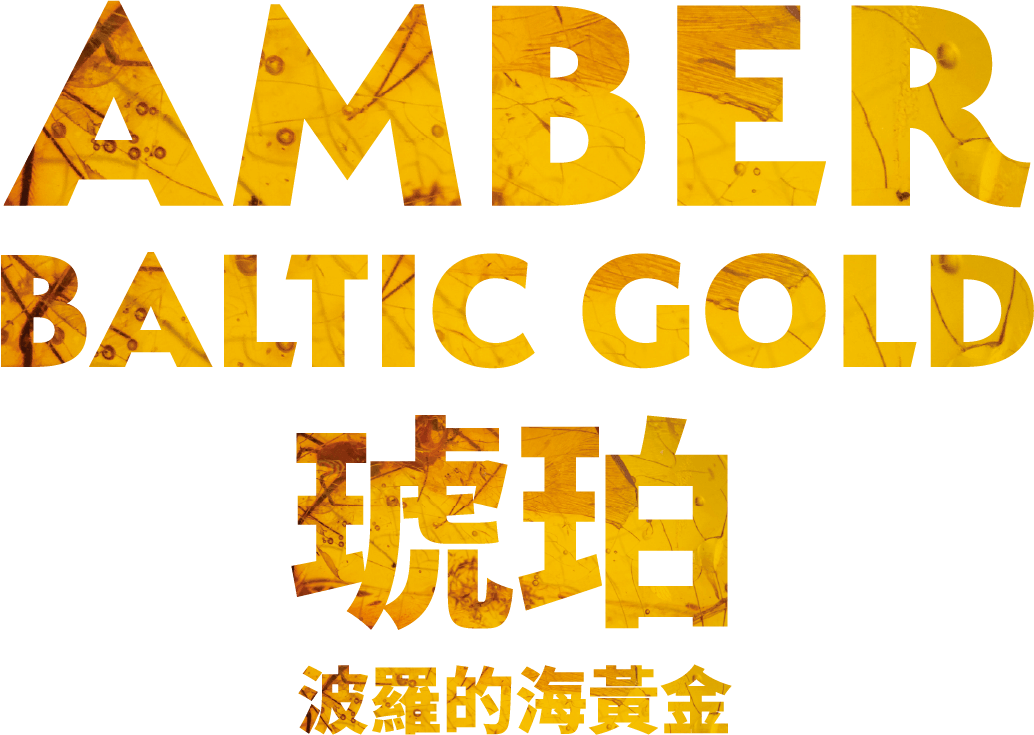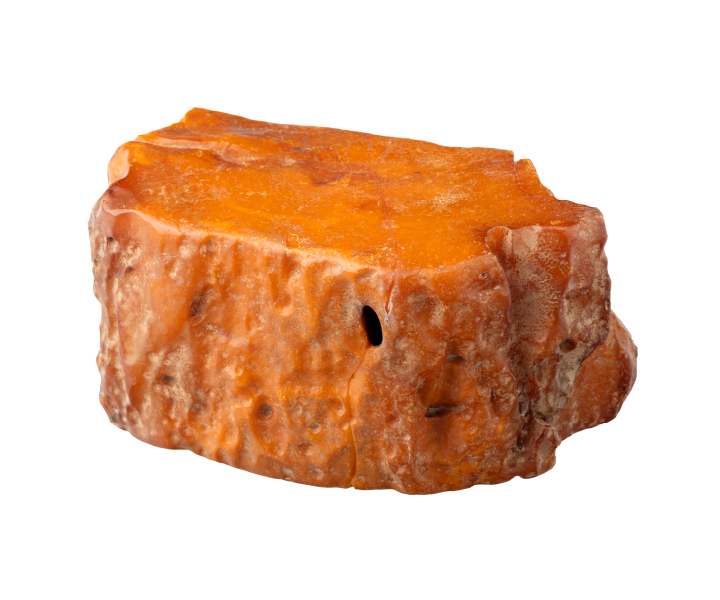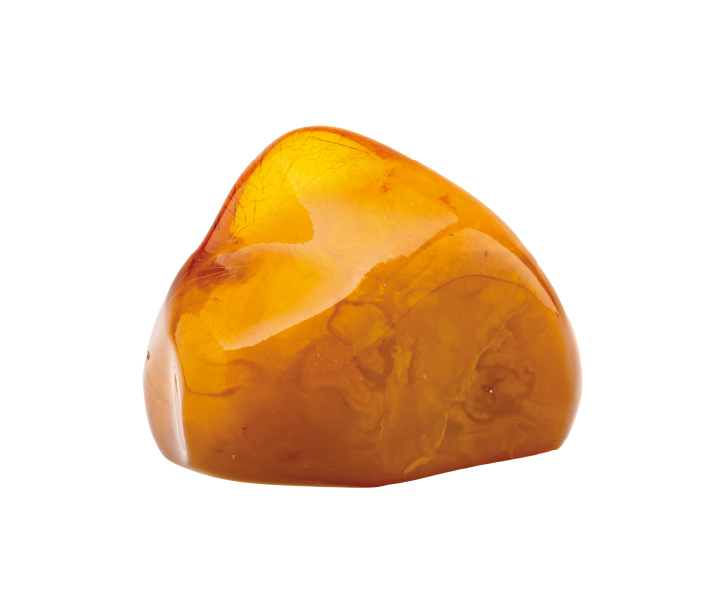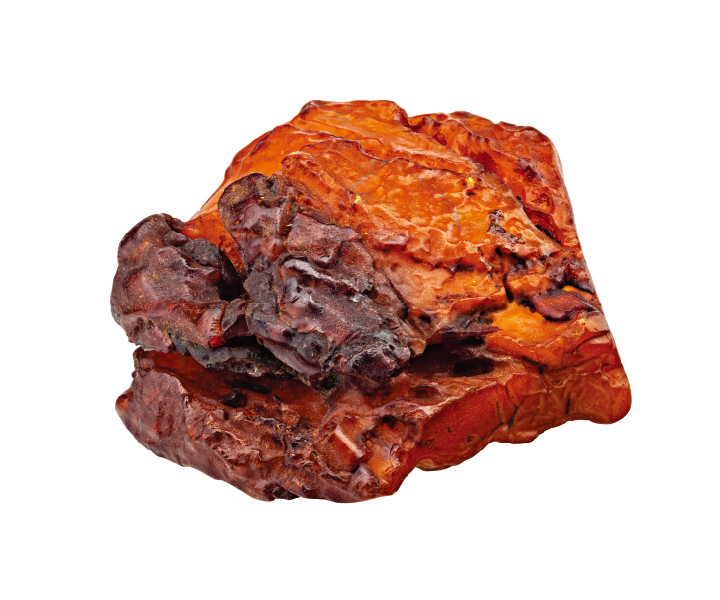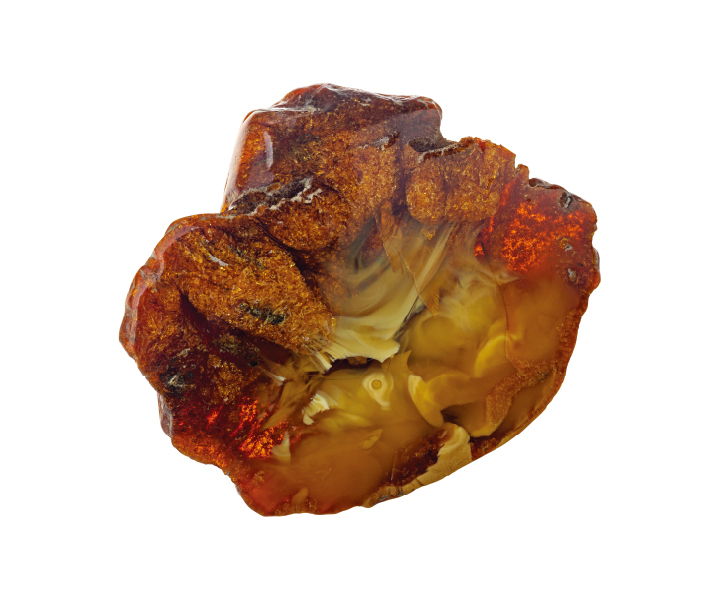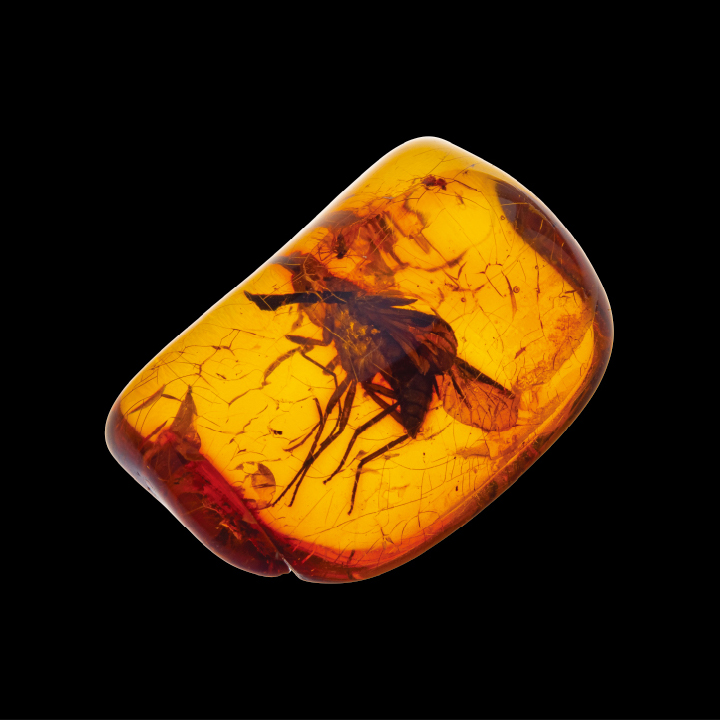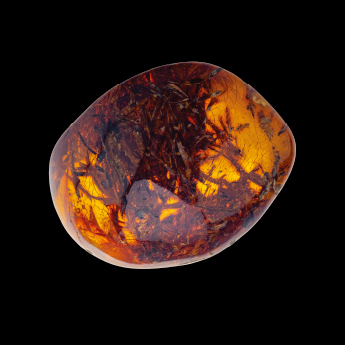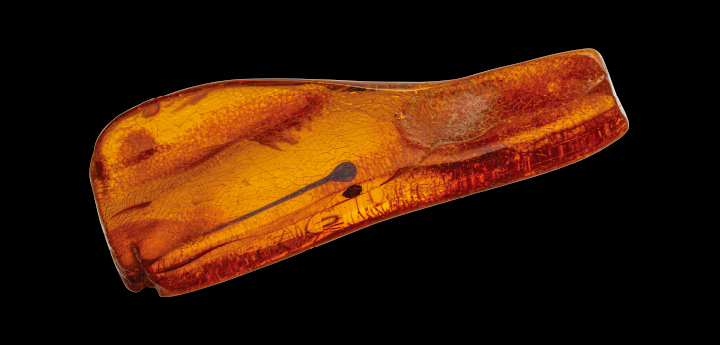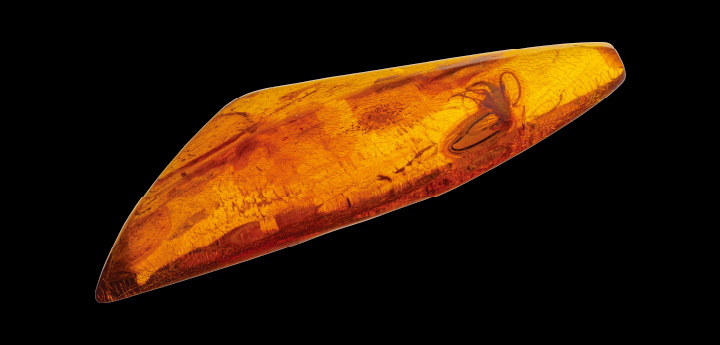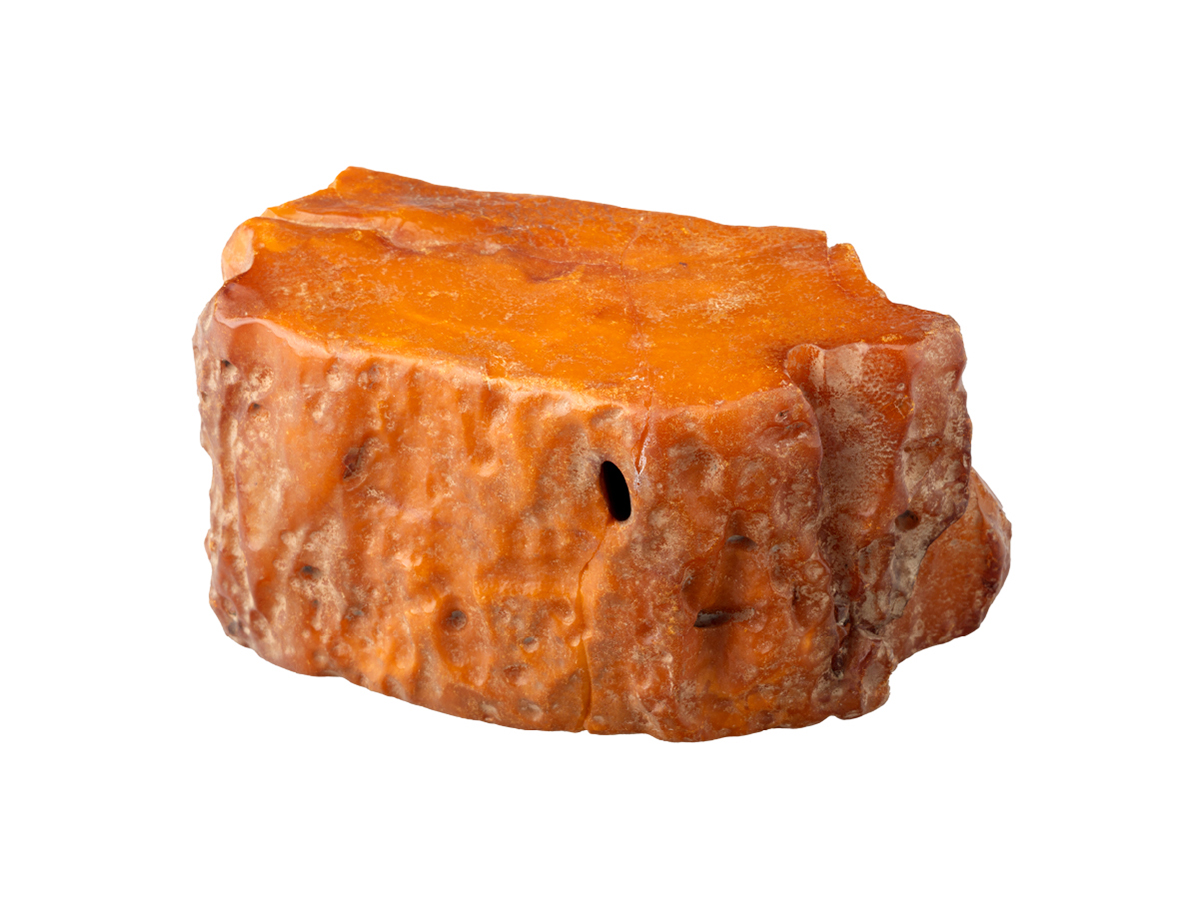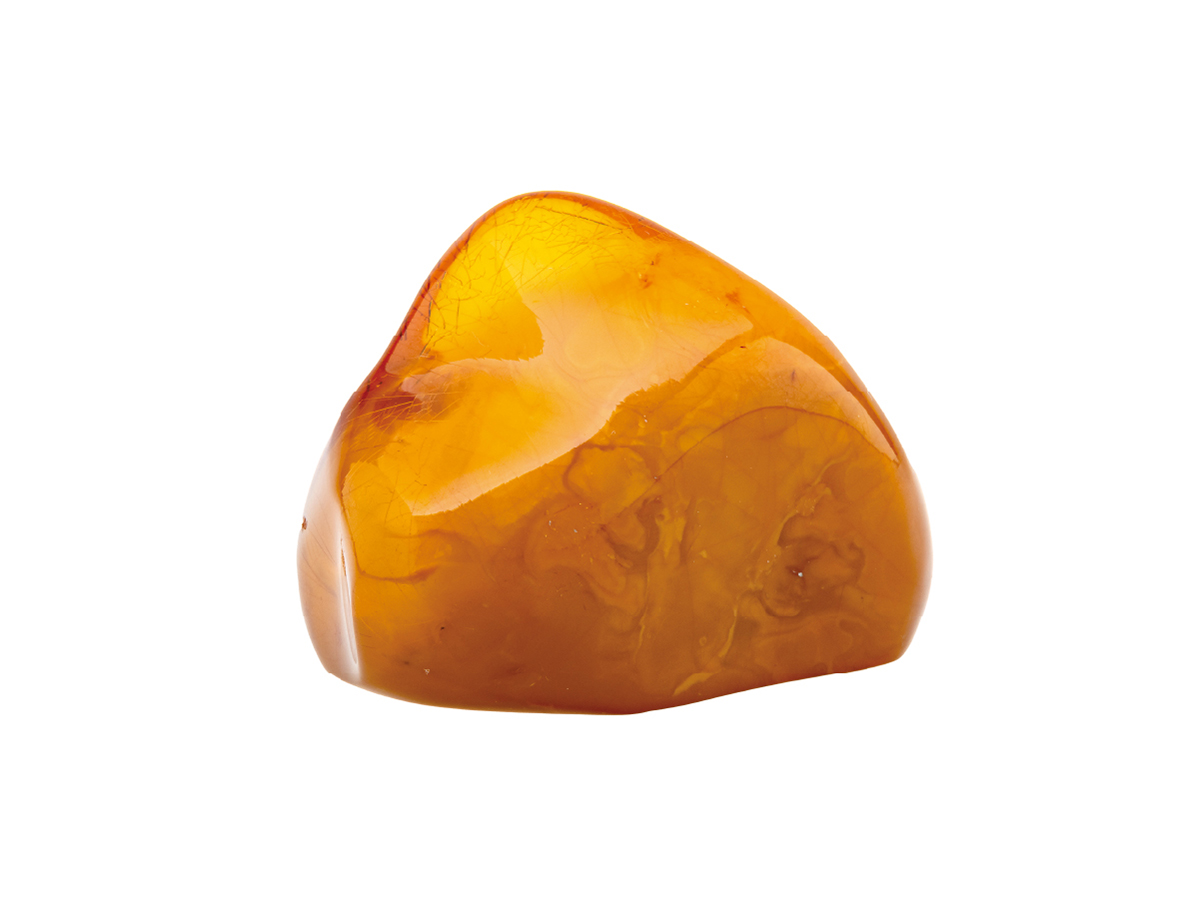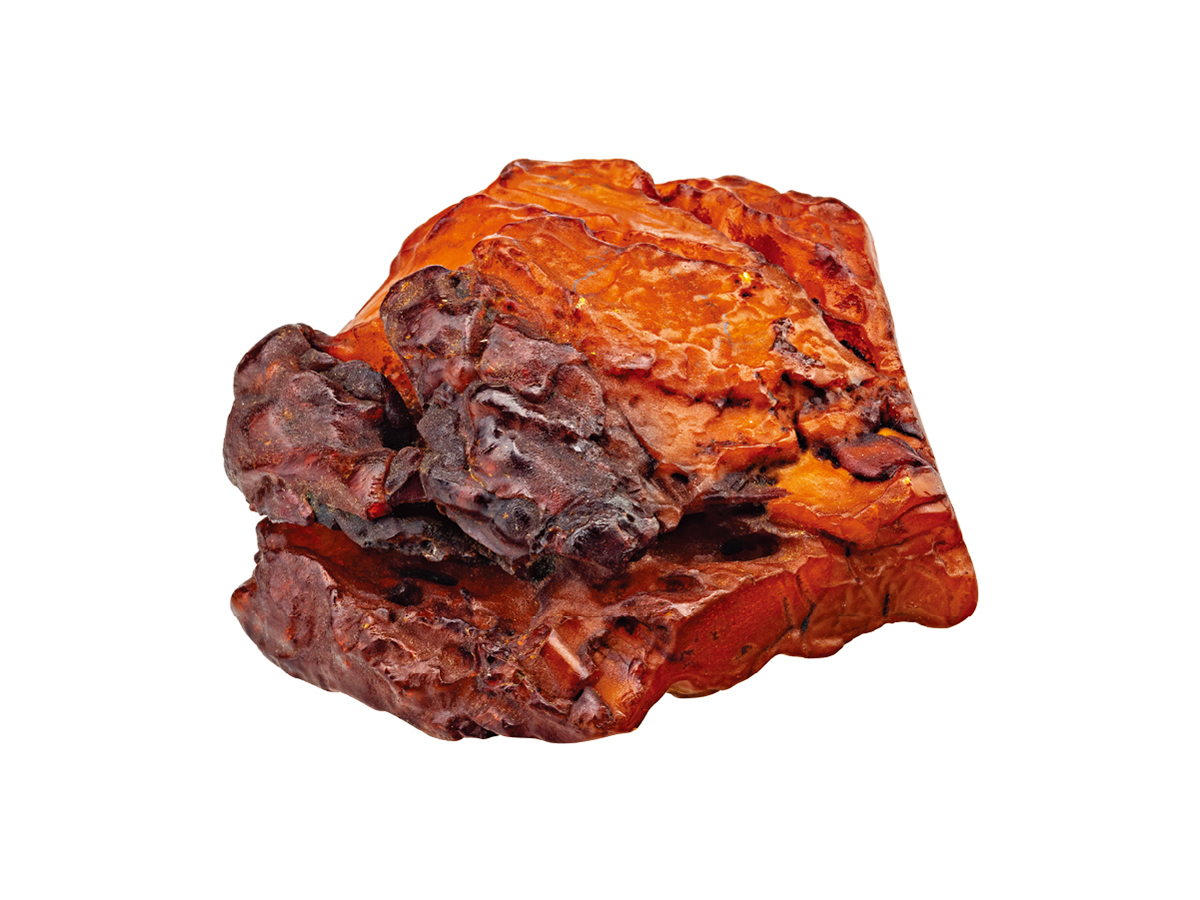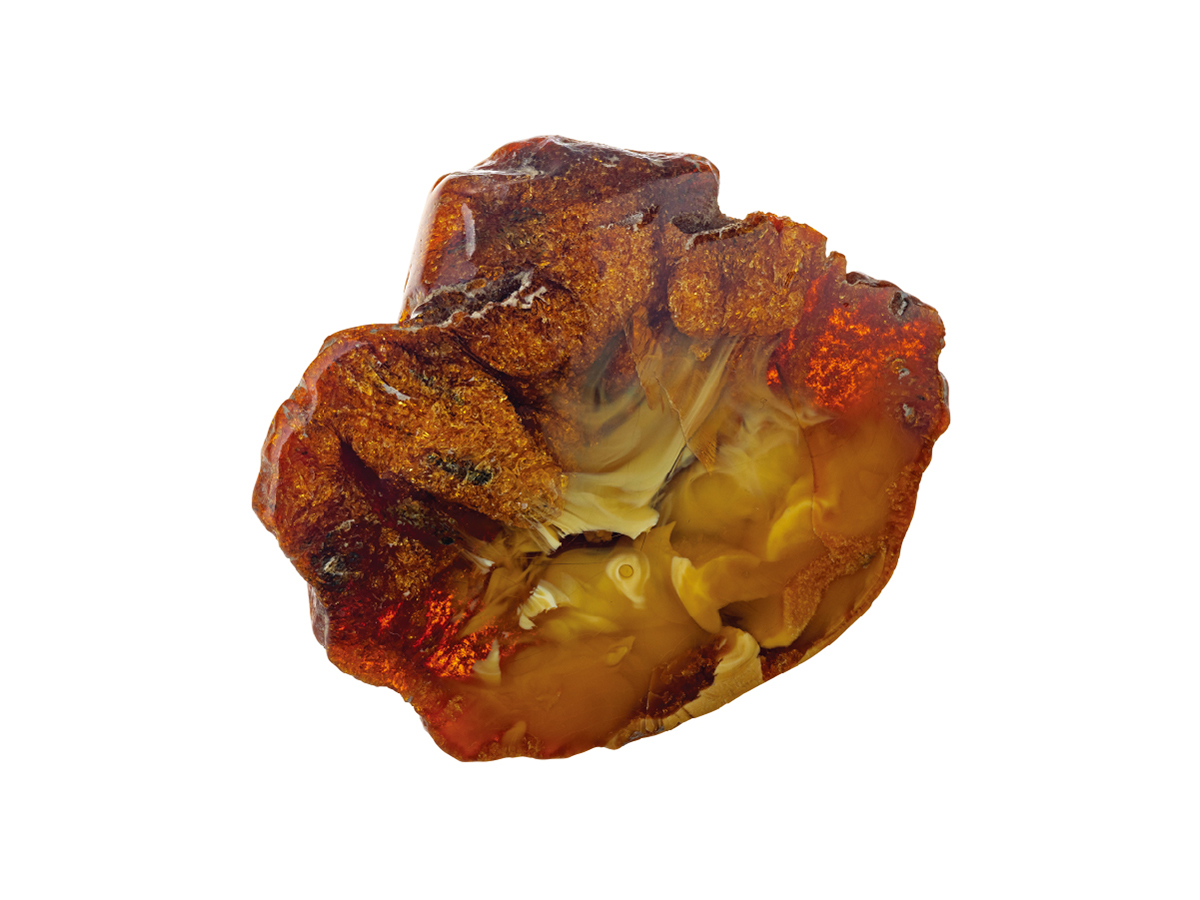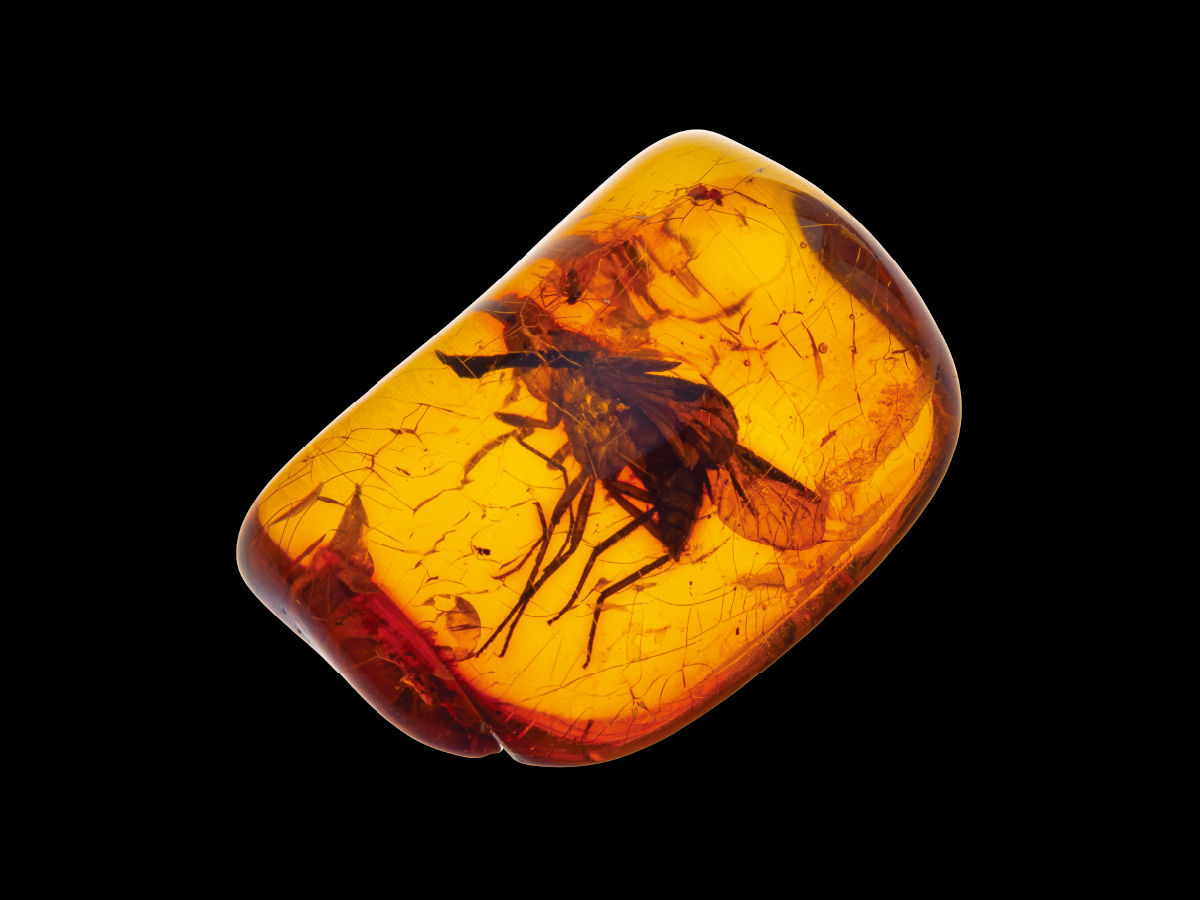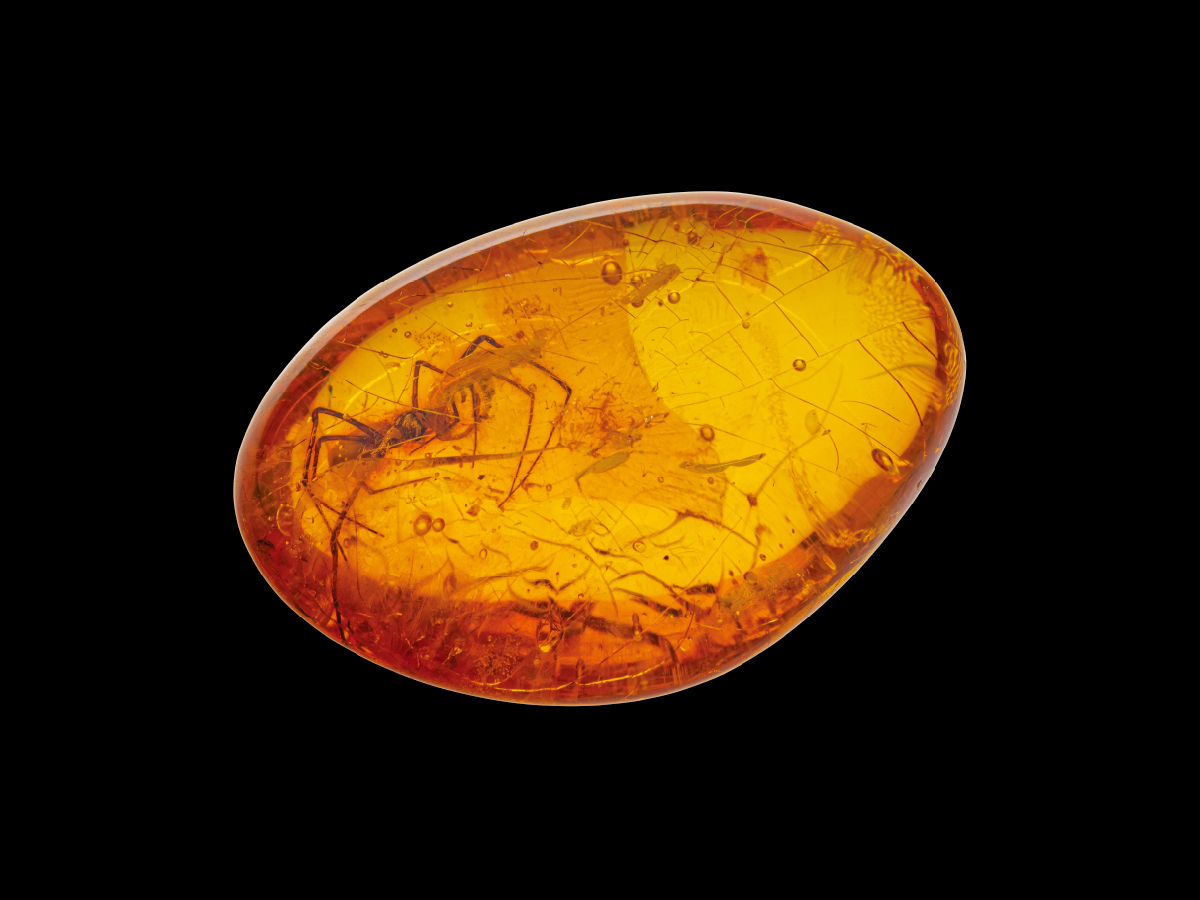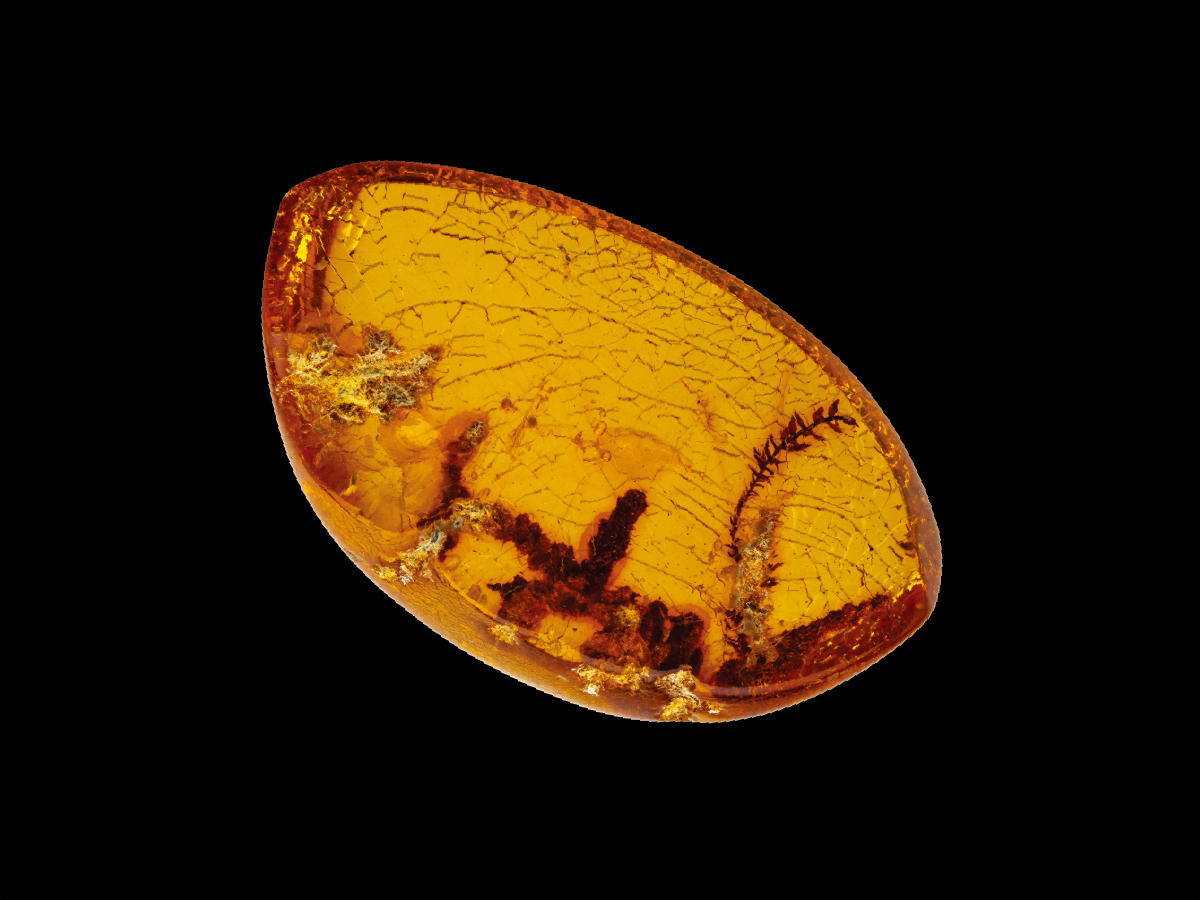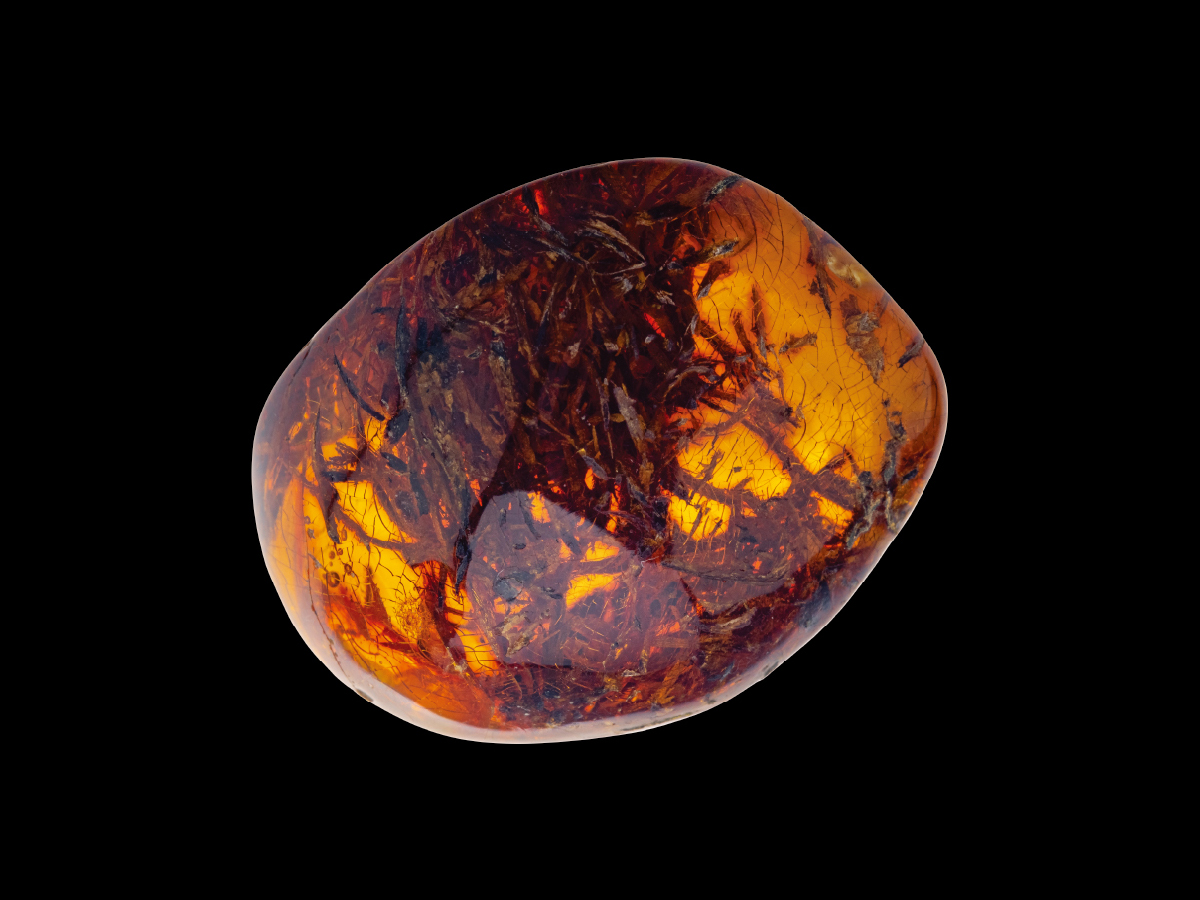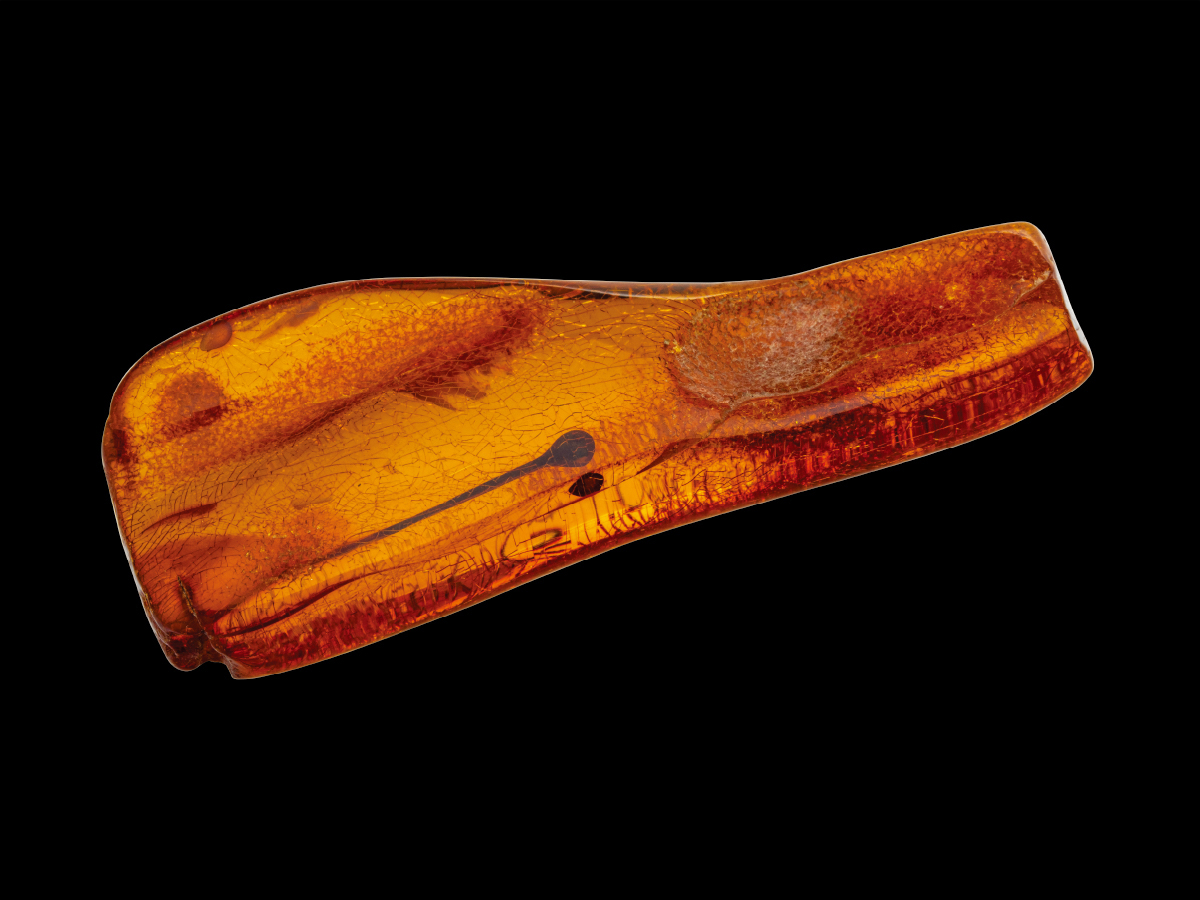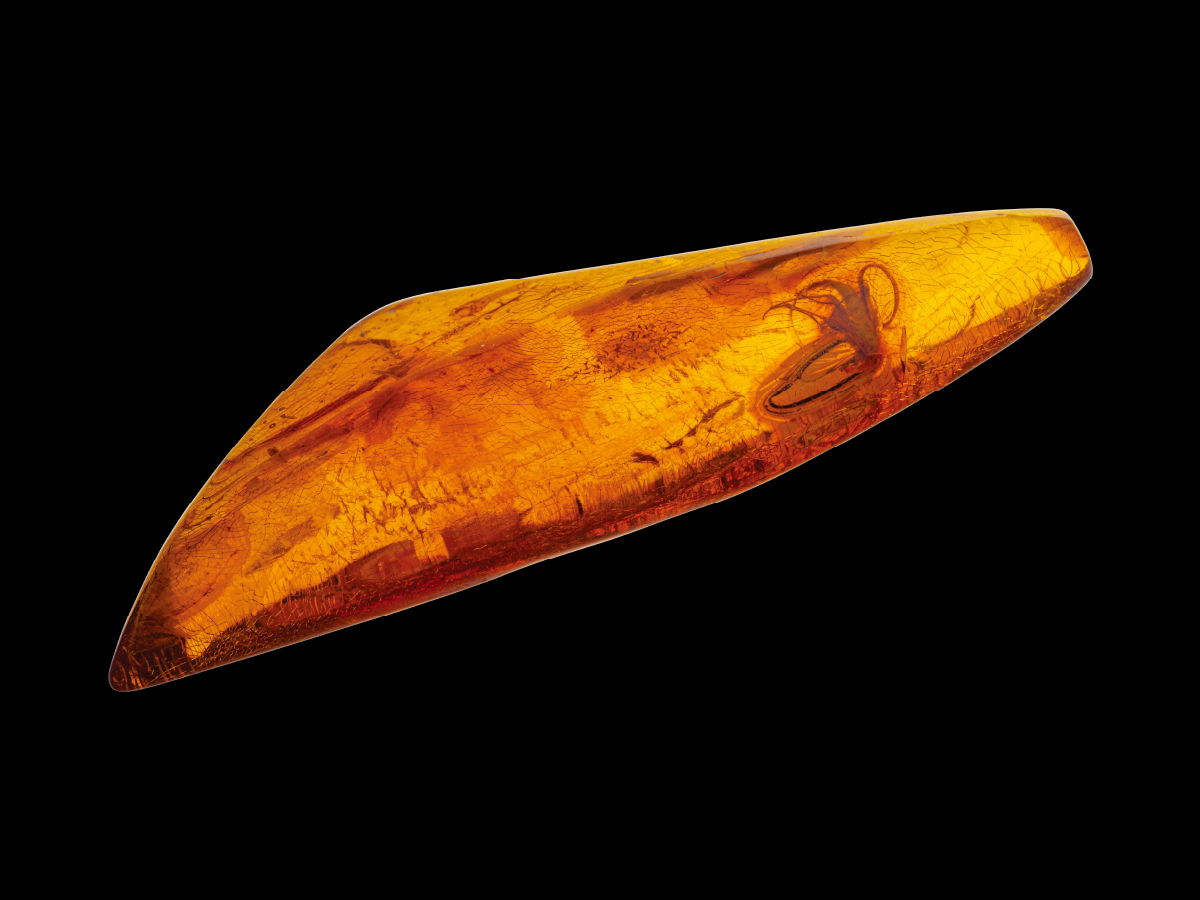Amber's Contribution to Geology and Palaeontology
Geology
Amber results from a complex process of fossilization. This procedure occurs only when organic matter like amber is protected from all natural degradation (for instance by rain, ice, heat, etc.). In the case of amber, the sudden insertion of the resin material into the ground is enough to trigger the slow process of fossilization during which the organic elements, along with entrapped dead organisms, are slowly replaced by mineral elements contained in the soil.
The oldest pieces of Baltic amber date back more than 35 million years and come in a variety of colours and hues. While Romans greatly appreciated clear, honey-coloured amber, rare, white, amber, called Royal White, was the most sought after in early modern Europe. Other pieces can have green, blue, red, black and brown shimmering reflections, and contain cloudy internal shapes as well as fine crackling.
Palaeontology
For palaeontologists, fossilized amber is a veritable treasure trove, providing precious information about the ecosystem in which the resin and tree originally lived. In rare instances, resin can entrap small vertebrates like lizards, but more often it imprisons invertebrates, especially insects. By studying organisms preserved in amber, scientists can determine their species (or discover new ones), and better understand the evolution of early life on earth.
Large Amber Piece
Miocene PeriodH. 10 cm x L. 15 cm x W. 7.5 cm
Romulis Family Collection
Amber with Internal Crackles and Cloud Effect
Miocene PeriodH. 5 cm x L. 10.5 cm x W. 6.5 cm
Romulis Family Collection
Red Amber
Miocene PeriodH. 13 cm x L. 15 cm x W. 7 cm
Romulis Family Collection
Amber with Mixed Colours
Miocene PeriodH. 2 cm x L. 6.8 cm x W. 5.5 cm
Romulis Family Collection
Amber with Fly Inclusion
Miocene PeriodH. 1.8 cm x L. 0.5 cm x W. 1 cm
Romulis Family Collection
Amber with Spider and Fly Inclusions
Miocene PeriodH. 10 cm x L. 2.5 cm x W. 2 cm
Romulis Family Collection
Amber with Grain Inclusions
Miocene PeriodH. 3.7 cm x L. 3 cm x W. 1 cm
Romulis Family Collection
Amber with Vegetal Inclusion
Miocene PeriodH. 2 cm x L. 4 cm x W. 3 cm
Romulis Family Collection
Amber with Water Drop
Miocene PeriodH. 6.5 cm x L. 1.2 cm x W. 0.8 cm
Romulis Family Collection
Amber with Mosquito Inclusion
Miocene PeriodH. 1.2 cm x L. 3.5 cm x W. 3 cm
Romulis Family Collection

